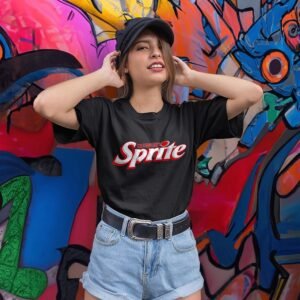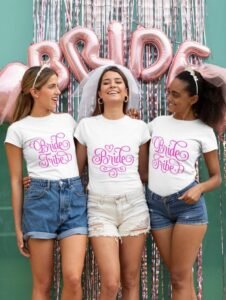The 1980s was a decade characterized by bold colors, eclectic styles, and a sense of individuality that transcended previous fashion norms. One of the most iconic elements of 80s fashion was the T-shirt. T-shirts in the 80s were more than just casual wear; they were a canvas for self-expression, a symbol of cultural movements, and a reflection of the vibrant pop culture of the time. This article delves into the various aspects of 80s T-shirt fashion, exploring its origins, styles, cultural significance, and enduring legacy.
Origins and Evolution
The T-shirt had humble beginnings as an undergarment but gained prominence as a standalone piece of clothing in the 20th century. By the 1980s, T-shirts had become a staple in everyday wear, thanks in part to the cultural shifts of the 60s and 70s. The 80s took this trend and amplified it, turning T-shirts into a medium for bold statements and artistic expression.

Iconic Styles and Trends
- Graphic Tees: Graphic T-shirts were arguably the most defining trend of the 80s. These T-shirts featured bold prints, often with pop culture references, band logos, movie posters, and quirky graphics. The popularity of MTV, which launched in 1981, played a significant role in the rise of graphic tees. Bands and musicians used T-shirts as promotional tools, leading to a surge in concert and band tees that fans proudly wore to show their allegiance.
- Logo and Brand Tees: Brand logos became a fashion statement in the 80s. Companies like Coca-Cola, Nike, and Adidas capitalized on this trend by producing T-shirts with their logos prominently displayed. These logo tees became a way for individuals to associate themselves with certain brands, reflecting their tastes and social status.
- Slogan Tees: Slogan T-shirts were another popular trend. They featured catchy phrases, political statements, or humorous sayings. These T-shirts allowed wearers to express their opinions and personalities without saying a word. “Choose Life,” worn by George Michael in Wham!’s “Wake Me Up Before You Go-Go” video, is one of the most famous examples.
- Neon and Bright Colors: The 80s were known for their love of bright and neon colors. T-shirts in neon pinks, greens, and yellows were all the rage, often paired with equally colorful accessories and bottoms. This trend reflected the decade’s bold, fun-loving spirit and a general move away from the muted tones of the 70s.
- Tie-Dye and DIY Fashion: The DIY (Do It Yourself) movement was another significant aspect of 80s fashion. Tie-dye T-shirts, a holdover from the 60s and 70s, continued to be popular. Many people took to customizing their T-shirts, whether through tie-dyeing, cutting and cropping, or adding embellishments. This allowed for a unique and personalized fashion statement.
- Sports and College Tees: Athletic wear influenced everyday fashion significantly during the 80s. Sports teams’ logos and college names on T-shirts became a common sight, often worn with jeans or shorts for a laid-back, preppy look. This trend was partly driven by the increasing popularity of fitness and sports culture during the decade.
Cultural Significance
The T-shirt in the 80s was more than just a piece of clothing; it was a cultural artifact. It mirrored the social, political, and cultural changes of the time.
- Music and Pop Culture: Music played a central role in defining 80s T-shirt fashion. The rise of rock bands, punk music, and the emergence of hip-hop all influenced T-shirt designs. Band T-shirts became collectibles, and wearing a certain band’s T-shirt was a way to identify with a particular subculture.
- Television and Movies: The 80s was a golden era for television and film, and T-shirts featuring characters, catchphrases, and logos from popular TV shows and movies became wildly popular. Shows like “The A-Team,” “Miami Vice,” and movies like “E.T.” and “Ghostbusters” were often seen emblazoned on T-shirts, making them a staple in pop culture fashion.
- Political Statements: The 80s were also a time of significant political and social change. Slogan T-shirts often carried political messages, supporting causes such as anti-nuclear protests, environmentalism, and human rights. These T-shirts served as a form of protest and solidarity, making fashion a platform for activism.
Legacy and Revival
The influence of 80s T-shirt fashion has endured well into the 21st century. The decade’s distinctive styles continue to inspire modern fashion, with many contemporary brands drawing on 80s aesthetics for their designs. Vintage 80s T-shirts are highly sought after by collectors and fashion enthusiasts, often fetching high prices due to their nostalgic value and unique designs.

In recent years, there has been a resurgence of interest in 80s fashion, with neon colors, graphic tees, and slogan shirts making a comeback. Modern fashion brands often release retro-inspired collections that pay homage to the iconic looks of the 80s. The DIY spirit of the 80s also persists, with people continuing to customize and personalize their T-shirts.
Conclusion
The T-shirt in the 1980s was a symbol of a vibrant and dynamic era. It was a decade that celebrated individuality, creativity, and bold self-expression. From graphic and slogan tees to neon colors and DIY fashion, 80s T-shirt trends reflected the cultural zeitgeist and left a lasting impact on fashion. Today, the legacy of 80s T-shirt fashion lives on, reminding us of a time when a simple piece of clothing could make a powerful statement.



